
Athene Galiciadis
Orientation
Museum Haus Konstruktiv is pleased to present the first solo exhibition on Athene Galiciadis (b. 1978 in Altstätten, lives and works in Zurich) to ever be held in a Zurich museum. Large-format paintings, painted sculptures, light objects and temporary dwelling structures can be seen – interwoven on site as an enthralling all-encompassing installation.
Athene Galiciadis’s artistic language is characterized by a distinctive repertoire of colors and forms, developed over the past 20 years: Abstract geometric elements, including circle segments, squares, and triangles, repetitively combine in her paintings, generating ornamental patterns. Pinks, greens and yellows, sometimes pastel and sometimes bright, are applied to the canvas, layer by layer, first in acrylic, then in oil paint, and contrasted with dark blue and black. In addition to these painterly works, ceramic sculptures constitute another important part of Galiciadis’s multimedia oeuvre, as do installations, which she develops and implements with a keen sense of the respective exhibition situation’s spatial conditions.
9.2.–7.5.2023
curated by Sabine Schaschl, Evelyne Bucher, Eliza Lips
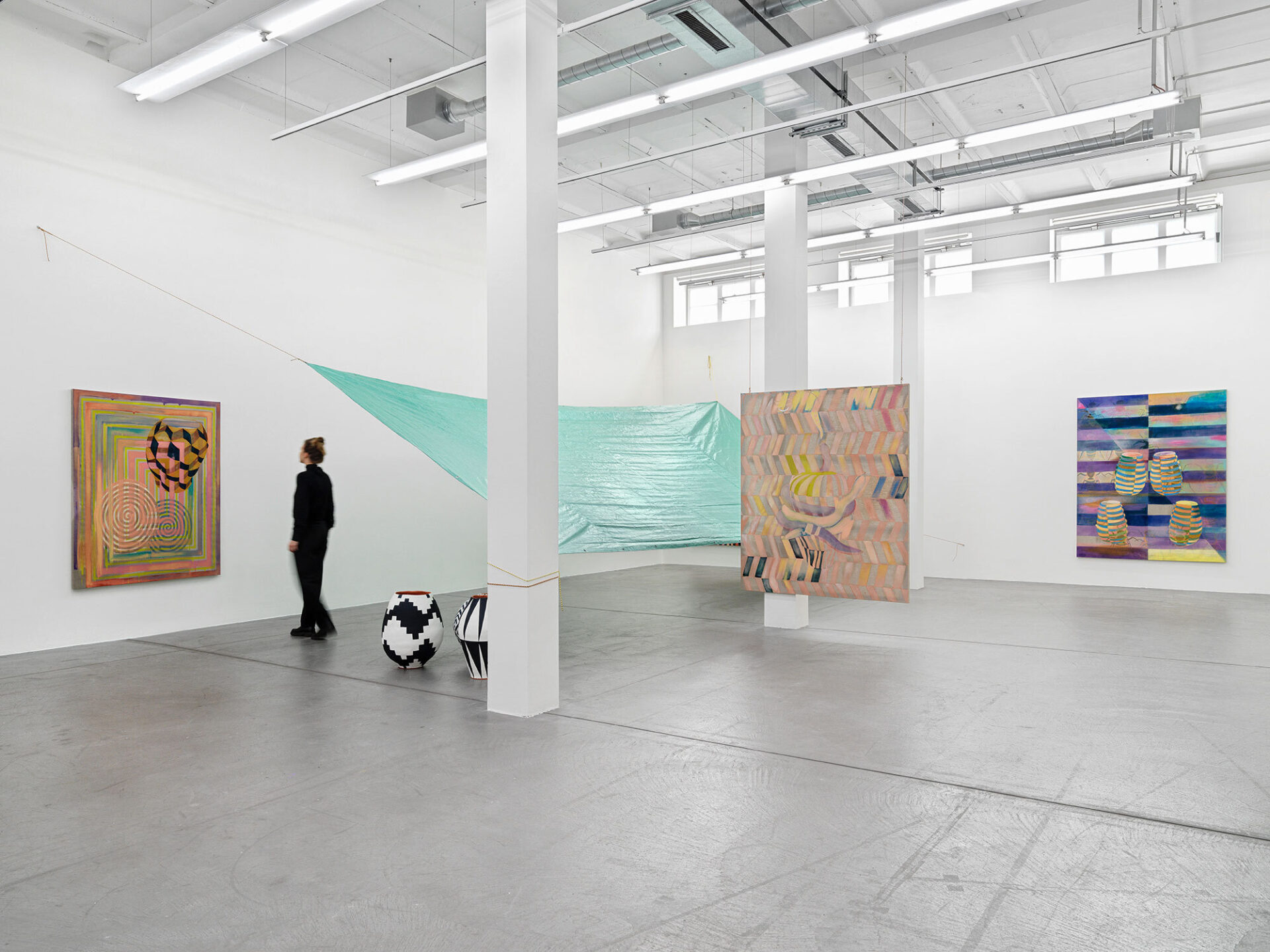
For the exhibition on the fourth floor at Museum Haus Konstruktiv, Galiciadis has realized a total of four temporary architectural structures. These walk-in tent-like formations, made of sewn-together tarpaulins and cords, are mounted in the cabinets and mirrored in the columned hall. Under the title Orientation, these ‘shelters’ convey the artist’s long-standing interest in various types of human dwelling, in their sculptural quality, and in the question of how they repeatedly provide fleeting order and hierarchies in new places. In this regard, Galiciadis has drawn inspiration from, among other things, the richly illustrated classic publication Shelter by Lloyd Kahn, Bob Easton and Joe Bacon (1973), as well as the more recent historical ethnographic study The Mushroom at the End of the World: On the Possibility of Life in Capitalist Ruins by Anna Lowenhaupt Tsing (2015). In particular, Tsing’s descriptions of so-called ‘mushroom camps’ in the pine forests of Oregon in the USA (temporarily set up by mainly migrant communities for the purpose of harvesting the valuable matsutake mushroom under precarious conditions) have left a lasting impression on the artist. Without any direct mention of the aforementioned source texts, references to such content resonate in the ‘shelters’ presented at Haus Konstruktiv. Galiciadis states that, for her, this is also primarily about how space can be appropriated by means of a simple formal set-up.
The scene of the turquoise tarpaulins is evocatively illuminated by a number of light objects. These each consist of a cell phone with the flashlight function switched on, and a water-filled PET bottle painted in acrylic, which is thus lit up in pink. These simple light sculptures are based on something Galiciadis observed during a vacation in Tuscany: She saw young people on the beach after sunset, grouped around an illuminated PET bottle instead of a fire, and listening to music from a cell phone, rather than the strumming of a guitar. Galiciadis subtly transfers this memory to the exhibition space – as an image of, and testimony to, an interesting generational shift.
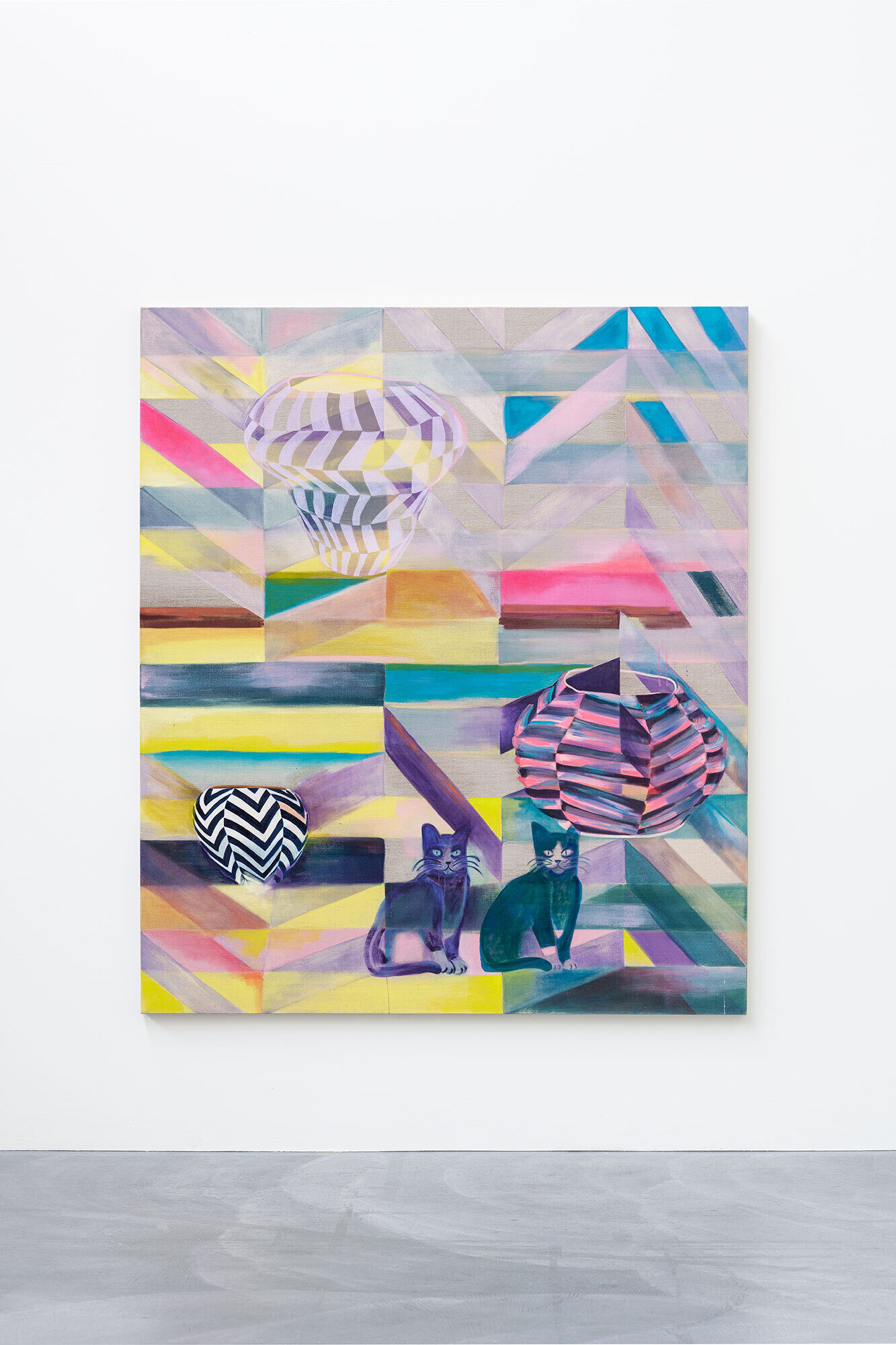
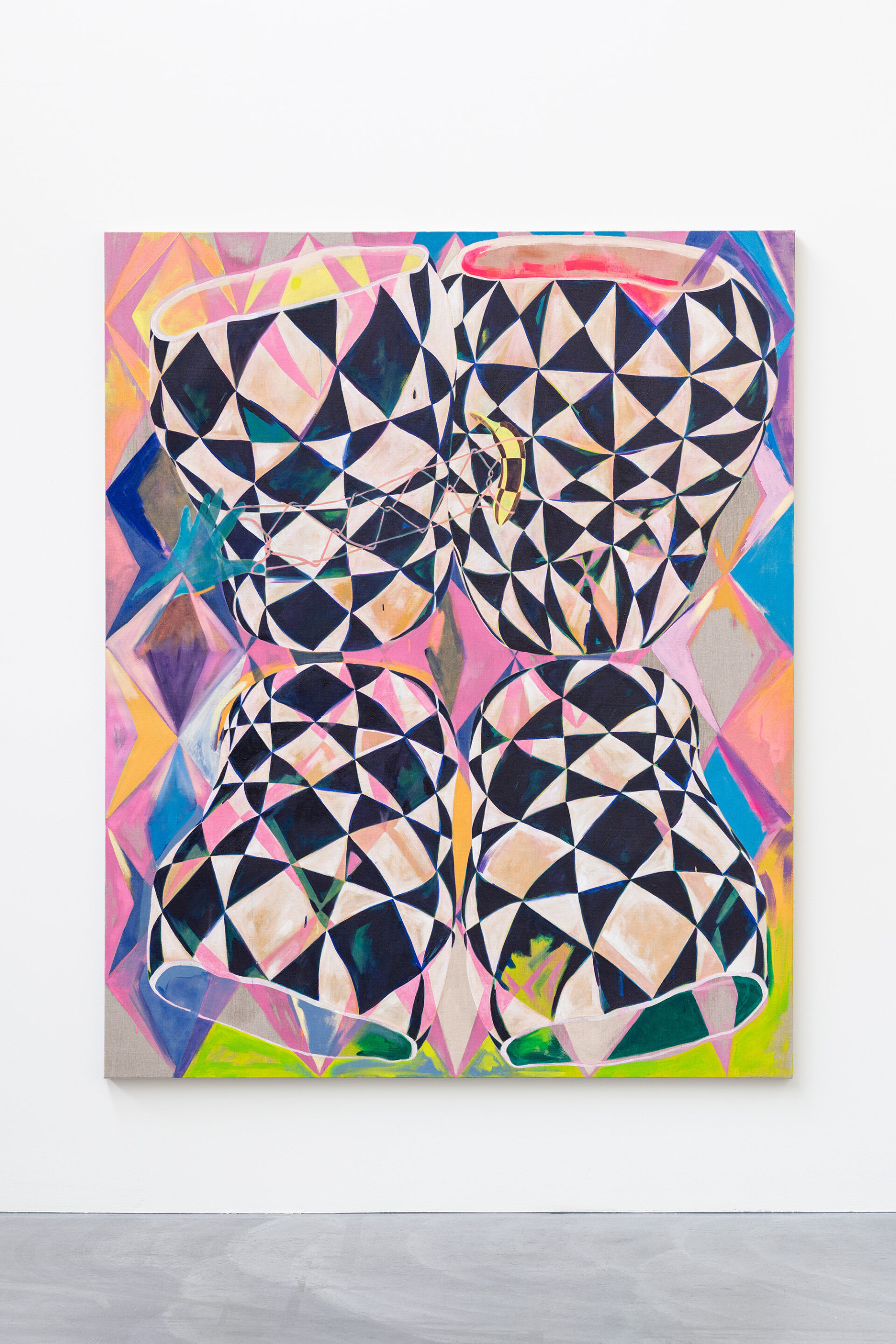
In the museum, the warm light and the building materials are joined by paintings and sculptures, which kaleidoscopically coalesce to produce a formally calculated and harmoniously colored setting. A total of 14 paintings from the series Stillleben (Still Lifes) are mounted on the walls in the space or hang sporadically from the ceiling, such that they flank the ‘shelters’ in some places. From the painted ornamental picture surfaces, an astonishing depth effect emanates, created by the overlapping of different patterns and colors, causing background and foreground to merge. Figurative motifs, such as cats, moths, flowers and pots, are also incorporated into the patterns. As individual motifs, these add poetic and humorous accents; in their repetition, they themselves become part of the whole and, to no small extent, bring to mind Andy Warhol’s garish silkscreens from the 1960s.
Pots not only appear on canvas in this Galiciadis exhibition, but are also present in the space, as Empty Sculptures. With regard to these ceramics, which are also made using a layering technique, the artist’s interest is in melding and combining raw material, in applying geometric structures, in their effect on the objects’ curves – and in transferring the motif back onto the two-dimensional canvas. The patterns can be interpreted as a homage to textile designs by Russian constructivists like Varvara Stepanova or Lyubov Popova. By way of historical reference, they function as an additional component of Athene Galiciadis’s formally stringent oeuvre, also providing links to socially relevant topics.
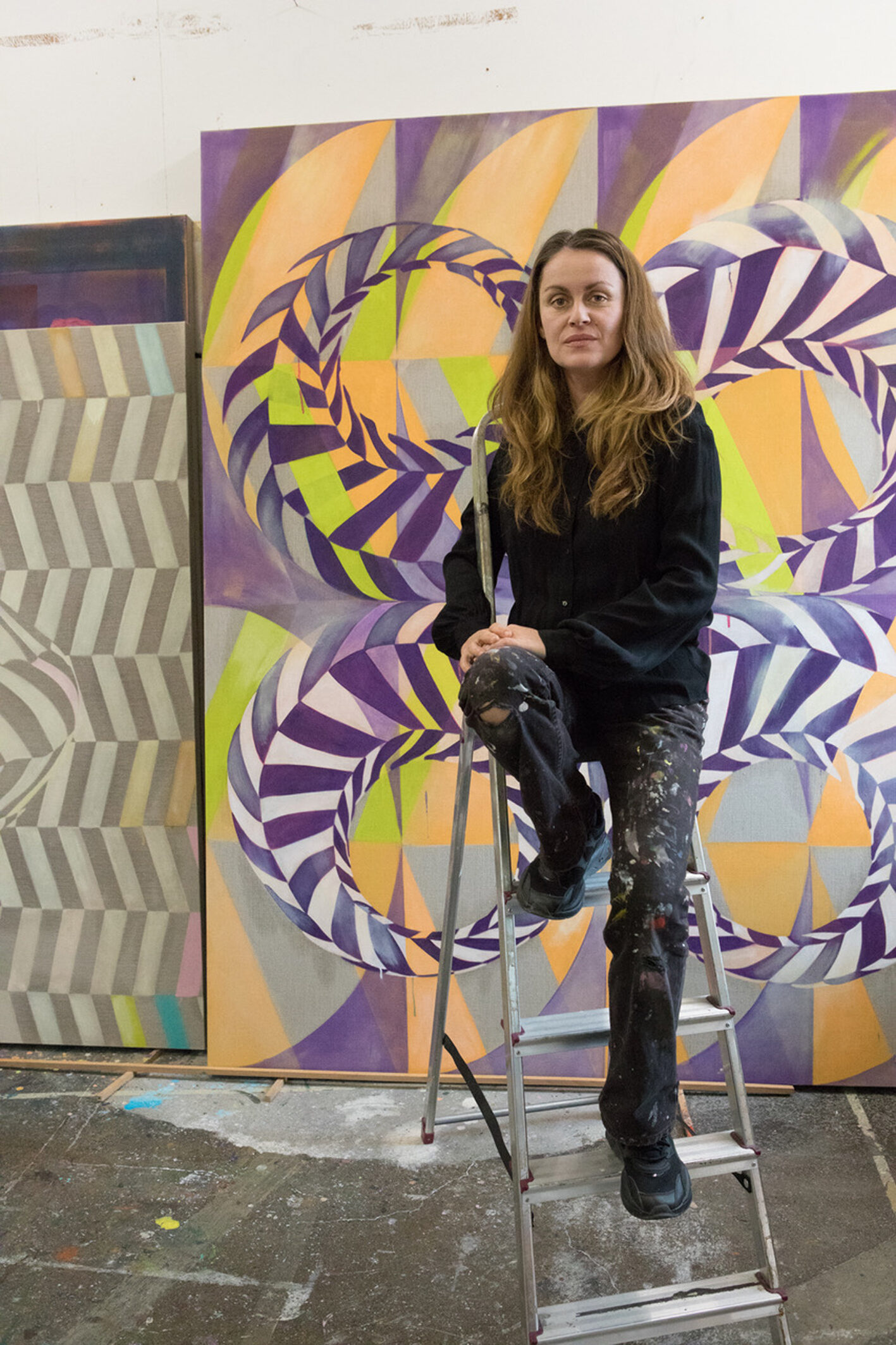
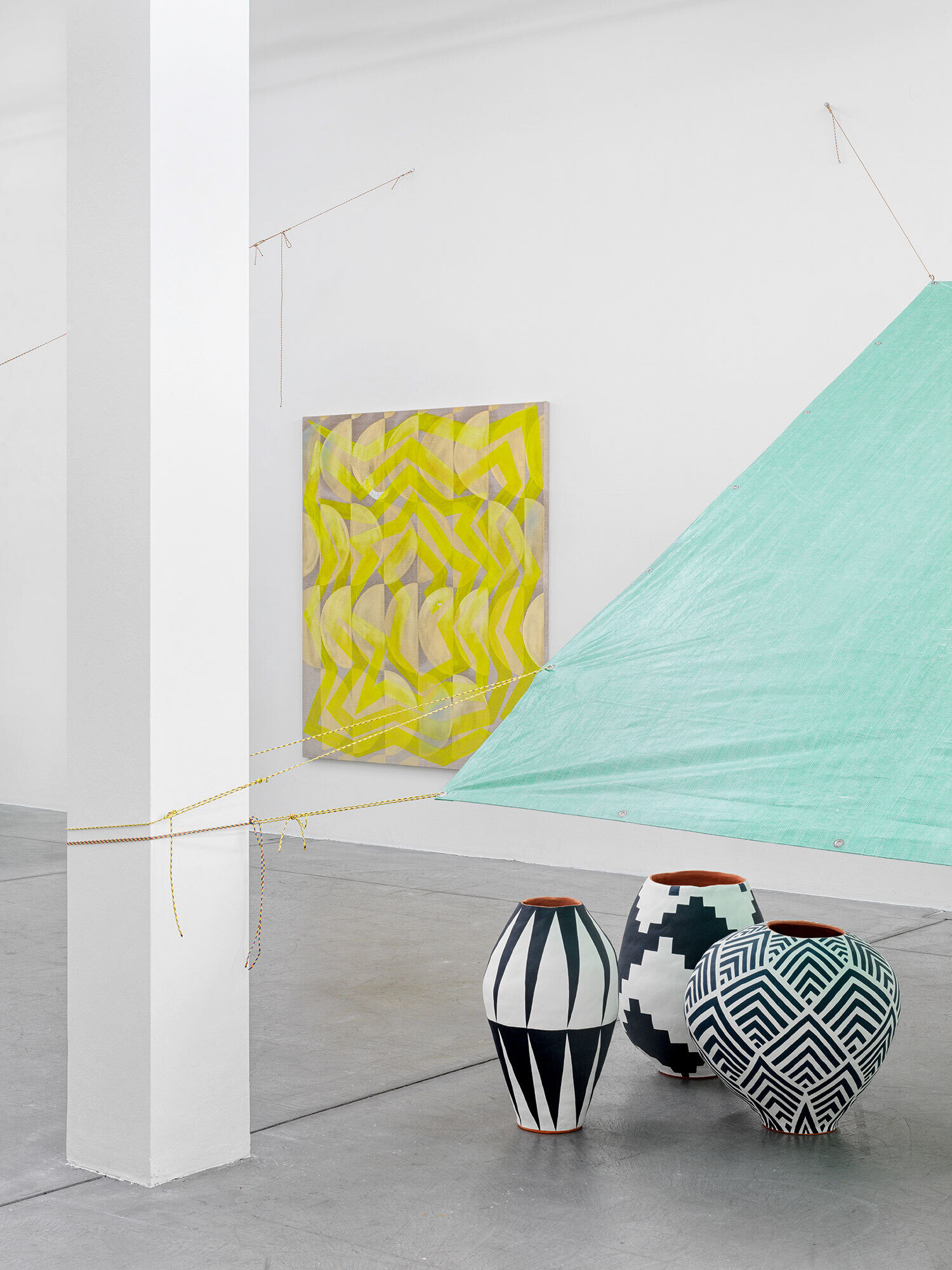
Athene Galiciadis studied fine arts at the Zurich University of the Arts (2003–2005) and at École cantonale d’art de Lausanne (2006–2007). She has had several solo exhibitions, such as Spiraling Shifts at Nidwaldner Museum Winkelriedhaus in Stans (2019) and Sublunatic at sic! Art Space in Lucerne (2013). In addition, she has participated in numerous group exhibitions, for instance at Aargauer Kunsthaus in Aarau (2021), Atelier Hermann Haller in Zurich (2020) and Kunst Raum Riehen (2016).
With generous support of

Additional support of
Stiftung Erna und Curt Burgauer
Ernst und Olga Gubler-Hablützel Stiftung
Museum Haus Konstruktiv is supported by its patrons, members and
